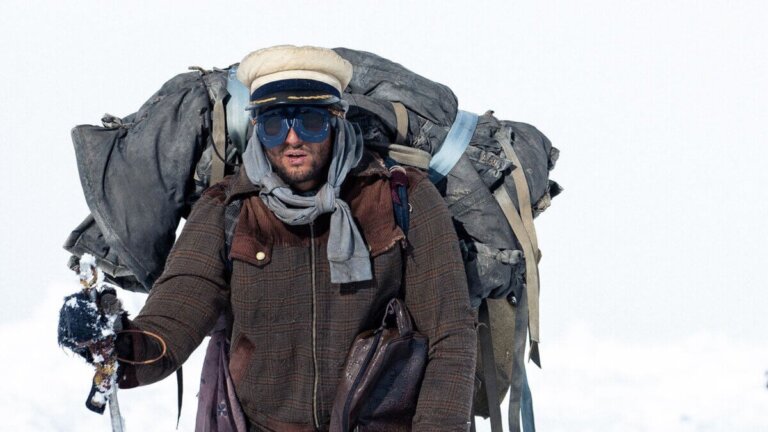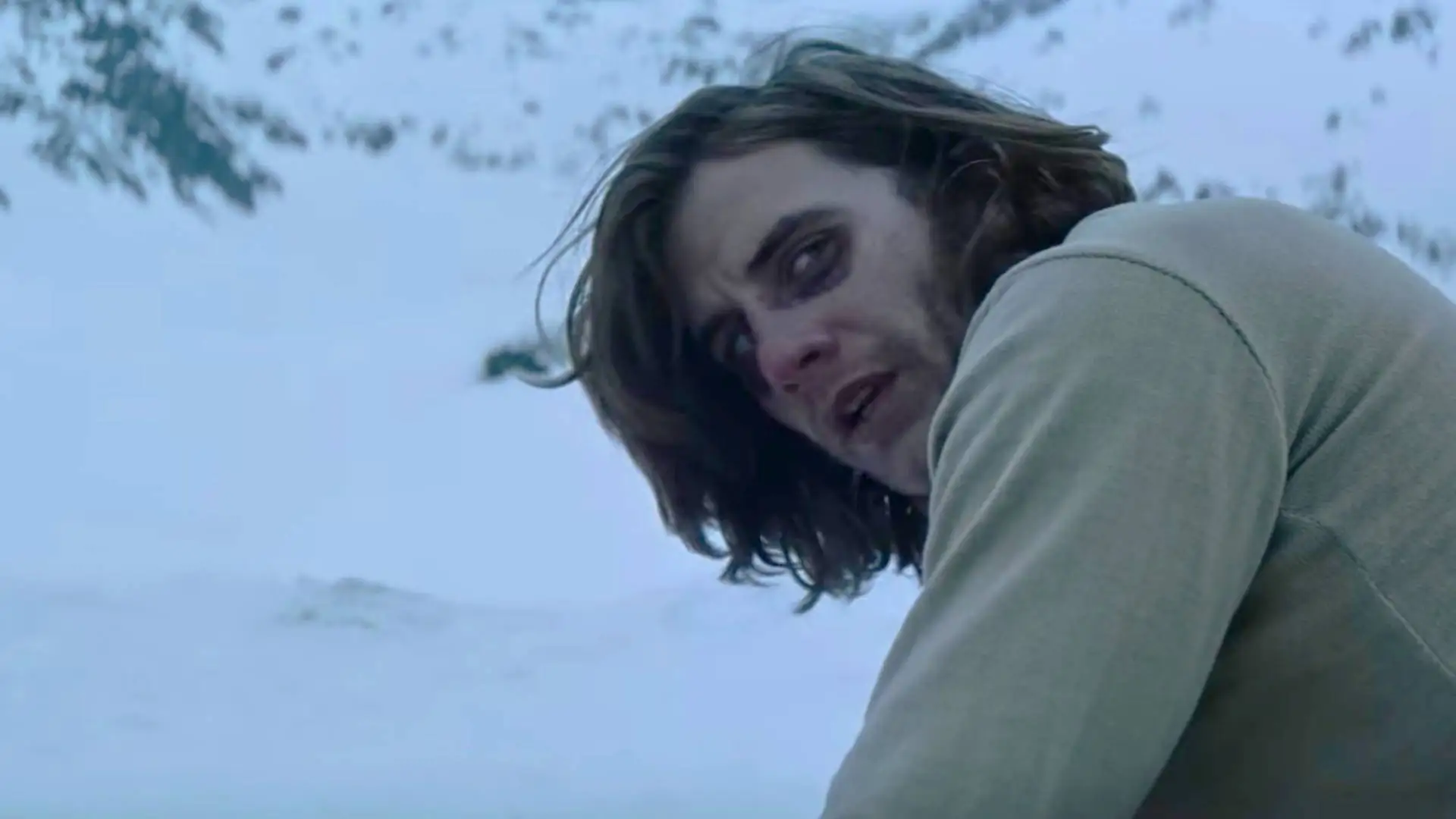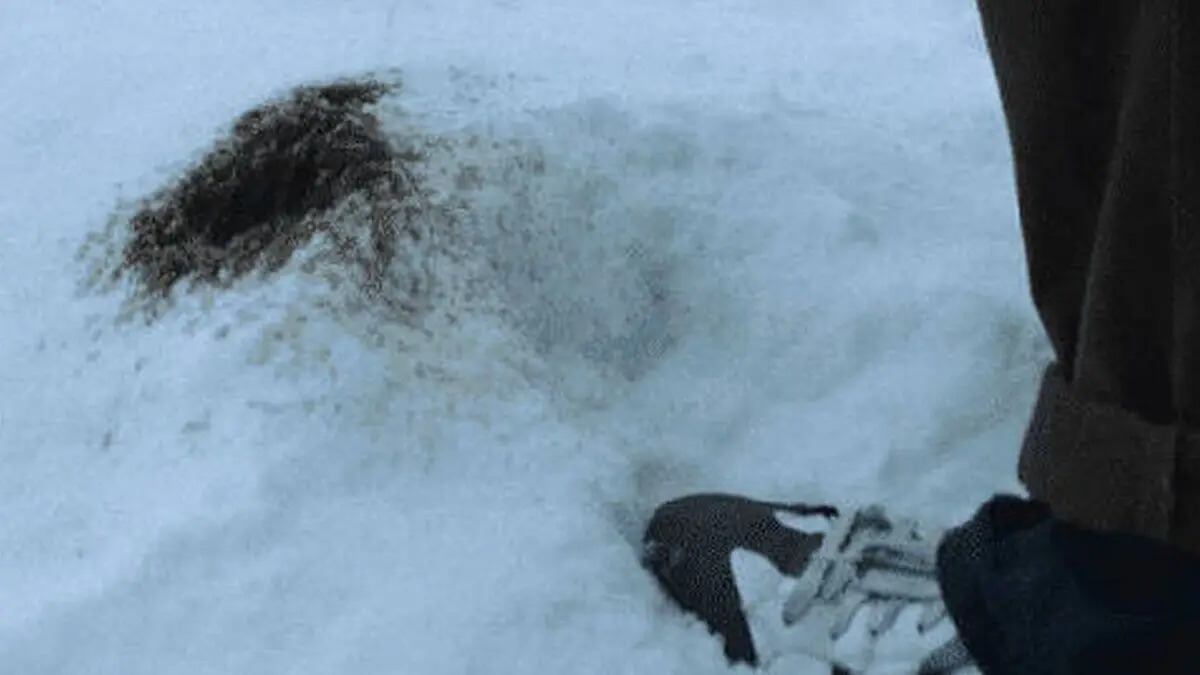"The Society of the Snow": Shocking Medical Details


Written and verified by the doctor Leonardo Biolatto
Spanish film director Juan Antonio Bayona brought to the screen a story as real as it is chilling. And he did it with such faithfulness to detail it’s impossible not to admire The Society of the Snow for its accuracy in recounting the health problems that the protagonists went through.
The book with the same name as the film (La sociedad de la nieve in Spanish), written by Pablo Vierci in 2009, served as an authoritative foundation. There’s also data from I Had to Survive, another 2016 book by the same author, which contains the first-person testimony of Roberto Canessa, one of the survivors.
The plane crash occurred in October 1972, in the area known as Valle de las Lágrimas (Valley of Tears), between Chile and Argentina. There were 45 people on the plane, 33 alive after the aircraft crashed, and only 16 who were able to get out of the Cordillera, more than two months after being isolated. What health challenges did they overcome?
Frostbite
Among the recreation details that The Society of the snow carries out, the Andean environment is one of the most striking. In addition to having filmed some scenes in the Valley of Tears itself, Bayona made use of various artifices to convey the extreme cold of the region.
Although the Uruguayans suffered the accident in spring, the altitude and the presence of snow could bring the temperature down to 14 or -4 degrees Fahrenheit. This, of course, creates a number of problems for the human body. For example, the survivors in the Andes suffered skin burns due to cold.
They’re lesions that appear when tissues freeze, especially on exposed extremities, such as fingers, nose, ears, and feet. According to information from a scientific publication in the Journal of Thermal Biology, the basic problem is that freezing temperatures damage blood vessels and ice crystals form between cells.
Frostbite can be superficial, with numbness, reddening of the skin, and blisters. But it can also evolve to a deep and complete form, reaching muscles and bones, with subsequent necrosis and the need for amputation.
Pressure ulcers
Bayona’s film shows, in some characters, ulcers and bedsores on different parts of the body. Sometimes, they’re noticeable on the backs of those who had to remain lying down for a longer period of time.
Also known as decubitus or pressure ulcers, they’re very frequent in hospitalized patients and constitute a risk for infections. In general, they appear in anatomical areas where soft tissues are in close contact with the hard surfaces of bones.
There’s prolonged pressure that compresses the blood vessels, and, as a result, a reduced flow of blood and oxygen to the skin. Then, if you add other factors, such as cold or friction from improper movement, the bedsore becomes more significant.
For the survivors of the Andes, perhaps the biggest challenge was to achieve healing. Poor hygienic conditions, with the added factor of freezing cold temperatures, would make it difficult for the healing of the ulcers to take place.
Raccoon eyes in The Society of the Snow

One image from the movie that went viral was of the actor portraying Fernando Parrado after waking up from being unconscious, with black eyelids and dark circles under his eyes. This is one of the details of The Society of the Snow that reveals the degree of precision that Bayona followed when directing.
What happened in reality is that Parrado was immediately comatose after the accident. His companions took him for dead, so they didn’t move him from where he was. On the third day, Fernando opened his eyes and recovered.
Those black circles under his eyes are known as raccoon eyes. Their appearance is related to a fracture at the base of the skull. In other words, an extremely serious situation.
Now, what was it that saved Parrado? Possibly it was the cold and the fact that he was considered dead. The others kept him immobile by not paying too much attention to him, and the hypothermia helped to reduce the swelling in the brain.
After a few days, his internal hemorrhage was contained, the injury failed to progress, and he woke up. His recovery is so amazing that a scientific article was published in the prestigious journal The Lancet to explain it.
In addition, Parrado is one of two (along with Canessa) who managed to complete the expedition to seek help. Finally, thanks to his feat, the whole group is rescued.
Dehydration in The Society of the Snow
To attempt to stay hydrated, the survivors had the option to melt the surrounding snow. And while this method is used even in sport mountaineering, it’s worth noting that it doesn’t provide a large amount of water by volume and that there’s no certainty about its microbiological conditions.
The alternative of “eating snow” also involves certain complications. In reality, it means introducing a substance at a low temperature into the digestive system, which alters the body’s thermal regulation.
According to information from research conducted with mountaineers who consume glacial water on their expeditions, we know that they fail to satisfy their electrolyte requirements with this source. Therefore, besides water loss, there’s a sodium and potassium deficiency that could be lethal.
When a person is dehydrated, blood flow and the heart’s ability to pump blood efficiently are affected. The initial symptoms of dehydration are as follows:
- Fatigue
- Dizziness
- Headache
- Dry mouth
- Dark colored urine
Severe and prolonged dehydration leads to kidney failure, brain damage, and cardiovascular shock.
Malnutrition among the survivors
The food supplies on the Uruguayan Air Force plane weren’t plentiful. The trip was planned for only a few hours, and the crew members were only carrying a minimal amount of food.
Marcelo Pérez del Castillo was the captain of the rugby team and, in the beginning, was in charge of rationing the provisions in order to survive. However, the avalanche that buried the fuselage on October 29th ended his life.
One of the details formed by the circumstances in The Society of the Snow is that the stranded passengers had no way of knowing how many days they would be in the Valley of Tears. They could only ration according to estimates, as nothing was certain.
The human body goes through different stages in its malnutrition process:
- Day one: The body begins to use reserve glycogen. This involves fluid loss, as the molecule is stored with water. As the glucose source is consumed, it will switch to the use of fats for energy.
- First week: The body enters a state of ketosis. It runs on fat and turns to other tissues to metabolize, such as muscle, thus starting down the path of sarcopenia. There’s a decrease in appetite as a reflection of energy savings.
- First month: Insulin levels decrease, and growth hormone increases. Protein breakdown is elevated, and muscle tissue shows signs of destruction. Micronutrient deficiency affects enzyme activities, making cells less efficient in their work.
Some details of The Society of the Snow that denote the problem of malnutrition are in the final weight of the corpses of those who died in the last weeks. On the 60th day after the accident, Numa Turcatti died with a body mass of only 55 pounds.
Wasn’t anthropophagy enough to avoid malnutrition?
Through listening to radio communications, the survivors of the Andes learned on the tenth day of the accident that their official search was suspended. At the same time, they noticed that they no longer had enough food to withstand the cold and the environmental conditions.
This is how the option of anthropophagy appeared. Eating the flesh of their deceased companions, preserved by the cold of the snow, was the way to acquire protein. Of course, it wasn’t an easy decision.
For a long time, we agonized. I went out in the snow and prayed to God for guidance. Without His consent, I felt I would be violating the memory of my friends; that I would be stealing their souls..
Some were able to eat this way, although reluctantly. Others couldn’t stand it and threw up what they ingested.
The point is that anthropophagy may be useful for a short time, but it doesn’t cover long-term nutritional requirements. According to an analysis in the journal Social Evolution and History, cannibalism has presented serious deficiencies in human history when it comes to sustaining and supporting the proper functioning of physiology.
Bloody gums from scurvy
Insufficient nutrition often means a noticeable vitamin C deficiency. When that happens, a disease known as scurvy appears.
During the history of world shipping, for example, scurvy was a common problem among the crew of ships that spent long periods at sea, especially around the 15th century. Lack of access to fresh food was the trigger.
Some of the rugby players had symptoms that are compatible with this disorder. Perhaps the most obvious was bleeding gums. Gingival bleeding is one of the oral signs of vitamin C deficiency.
This vitamin, which is ascorbic acid, is essential for the synthesis of collagen, a structural protein in the body. The lack of collagen in the walls of blood vessels makes them more fragile and prone to rupture.
Other symptoms of scurvy include the following:
- Fatigue and weakness
- Muscle and joint pain
- Bruising of the skin.
Cramps and stiffness
Another consequence of malnutrition is the lack of sufficient calcium in the cells for basic tissue processes to take place. In the case of muscles, this would be contraction and relaxation.
In contexts of hypocalcemia, muscle fibers don’t properly complete their cycle to maintain muscle tone. Therefore, contractions may be generated that don’t pass to the relaxation phase, with the consequent sensation of stiffness and the inability to move.
Extreme cases evolve into tetanus and even convulsions. Due to a lack of calcium, laryngospasm may also occur, which sometimes proves fatal.
Among the circumstances in The Society of the Snow that helped lead to the joint decision to resort to anthropophagy is the search for calcium. Those who knew they were suffering from cramps due to hypocalcemia tried to carve the bones of the victims and ingest the powder in order to incorporate the mineral that way.
Several fractures
Arturo Nogueira fractured his lower limbs on impact. Antonio Vizintín fractured two ribs. Álvaro Mangino also suffered a broken tibia in one leg.
In a scene from The Society of the Snow, we see how Roberto Canessa aligns Álvaro’s fracture with a jerk movement. Then, with cloths, he immobilizes the limb same limb. Seventy-two days later, Mangino is able to get on the rescue helicopter walking, as the callus has already formed on the bone he had broken.
Imagining the problems associated with these fractures in the hostile environment of the Valley of Tears is incredible. The chances of bone infection were very high, in addition to the immediate consequences of hemorrhage and inflammation.
An “advantage” in this journey was the presence of two medical students among the rugby players. Their wisdom and expertise made it possible, to a large extent, for there to be survivors.
As for the fractures themselves, it’s important to keep in mind that the physical condition of the players was superior to that of a person with no training or only basic physical activity. This could have contributed to a better recovery from the injuries.
The mystery behind the black urine

Another viral scene that focuses on the details of The Society of the Snow is the one in which black urine appears. It was a moment that caught the attention of viewers and led to a number of hypotheses.
The most likely scenario is that the survivors were suffering from rhabdomyolysis. As we explained when talking about malnutrition, the body starts to use muscle tissue to obtain protein and generate energy.
The problem is that the excess use of muscle protein generates a waste product that the kidneys have to eliminate. That metabolic waste is myoglobin, a substance that damages the renal filter by passing through it in large quantities.
If dehydration, which tends to concentrate urine to save fluids, is added to myoglobin, the result is a darkening of the liquid we expel.
The details in The Society of the Snow are incredible and speak of resilience
This amazing Netflix film will continue to be talked about. It was nominated for an Oscar, won 13 Goya 2024 awards, and is the most-watched non-English speaking film on the streaming platform.
The story of the survivors of the Andes exceeds any capacity for wonder. From the young man who comes out of a coma and walks miles through the snow to find help to the medical student who treats a fracture in the broken fuselage of an airplane, all the minute details come together to form one of the greatest narratives of human capacity.
We may be walking to our deaths, but I would rather walk to meet my death than wait for it to come to me.
Both Bayona’s latest film and his previous 1993 film Alive!, as well as the testimonial books, are gateways to resilience in its most extreme form. It’s a story that transcends the ages and inspires us to face adversity.
All cited sources were thoroughly reviewed by our team to ensure their quality, reliability, currency, and validity. The bibliography of this article was considered reliable and of academic or scientific accuracy.
- Cotomacio, C. C., Campos, L., & Martins, F. (2021). The oral manifestations of scurvy in the 21st century. Research, Society and Development, 10(12), e344101220569-e344101220569. https://rsdjournal.org/index.php/rsd/article/view/20569
- Estol, C. J. (2009). Accidental best neurocritical care in the Andes. The Lancet Neurology, 8(8), 697-699. https://www.thelancet.com/journals/laneur/article/PIIS1474-4422(09)70186-3/fulltext
- Gerald, S. (2021). The Limited Nutritional Value of Cannibalism and the Development of Early Human Society. Social Evolution & History, 20(2), 27-49. https://www.sociostudies.org/journal/articles/3054804/
- Joshi, K., Goyary, D., Mazumder, B., Chattopadhyay, P., Chakraborty, R., Bhutia, Y. D., … & Dwivedi, S. K. (2020). Frostbite: Current status and advancements in therapeutics. Journal of Thermal Biology, 93, 102716. https://www.sciencedirect.com/science/article/abs/pii/S0306456520304885
- López, A. M. C., Valladolid, A. U., Ambriz, C. A. A., Landeros, L. Y. C., Cortes, M. C., Parra, J. A. C., & Ortiz, P. G. (2018). Approaching the Patient with Traumatic Brain Injury: a First-contact Physician Approach. Atención Familiar, 26(1), 28-33. https://www.medigraphic.com/cgi-bin/new/resumenI.cgi?IDARTICULO=83991
- Nayak, S., & Jindal, A. (2015). Myoglobinuria and Acute Kidney Injury. Journal of Integrative Nephrology and Andrology| April-June, 2(2), 50. https://www.researchgate.net/profile/Atul-Jindal/publication/275546405_Myoglobinuria_and_Acute_Kidney_Injury/links/553f5e5f0cf23e796bfb360f/Myoglobinuria-and-Acute-Kidney-Injury.pdf?_sg%5B0%5D=started_experiment_milestone&origin=journalDetail
- Pepe, J., Colangelo, L., Biamonte, F., Sonato, C., Danese, V. C., Cecchetti, V., … & Cipriani, C. (2020). Diagnosis and management of hypocalcemia. Endocrine, 69, 485-495. https://link.springer.com/article/10.1007/s12020-020-02324-2
- Torra-Bou, J. E., Verdú-Soriano, J., Sarabia-Lavin, R., Paras-Bravo, P., Soldevilla-Ágreda, J. J., & García-Fernández, F. P. (2016). Las úlceras por presión como problema de seguridad del paciente. Gerokomos, 27(4), 161-167. https://scielo.isciii.es/scielo.php?pid=S1134-928X2016000400007&script=sci_arttext&tlng=en
- Viscor, G., Corominas, J., & Carceller, A. (2023). Nutrition and Hydration for High-Altitude Alpinism: A Narrative Review. International Journal of Environmental Research and Public Health, 20(4), 3186. https://www.mdpi.com/1660-4601/20/4/3186
This text is provided for informational purposes only and does not replace consultation with a professional. If in doubt, consult your specialist.








